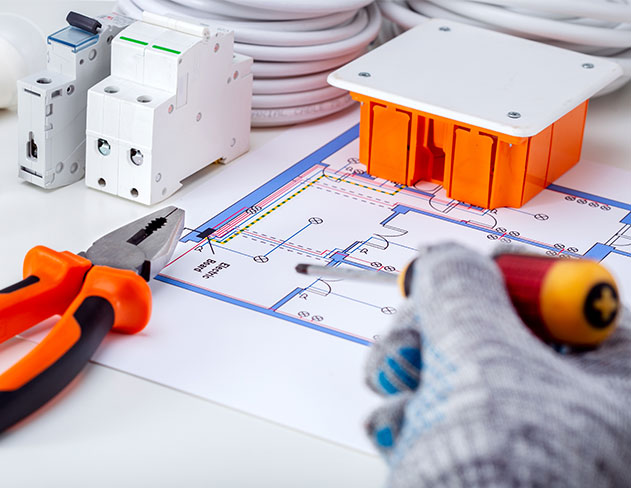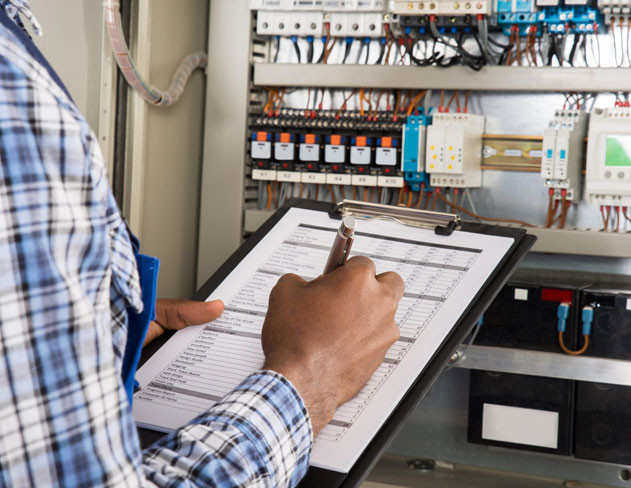Maximising ROI on EICR Investments: A Cost Perspective for Facilities Managers
Introduction
Electrical installation condition reports (EICR) examine a facility’s infrastructure to identify electrical safety hazards or code non-compliance issues. As regulatory requirements grow more stringent, quality EICR has become integral for minimising legal liability and operational disruption risks. However, property managers often view it as an unavoidable current service cost centre, especially if financial performance is less than ideal.
This article provides an alternative perspective – showing how to maximise return on investment (ROI) from EICR through strategic planning and execution. This isn’t just another in a long list of contractual obligations for commercial or residential property owners. There are economic benefits to being safe and protecting critical assets. With some upfront analysis and resource allocation, you can shift EICR into a value-creation driver offering a breadth of services, improving safety, efficiency, insurance costs and even maintenance prioritisation.
Key Takeaways
- Conduct detailed cost-benefit impact analysis to quantify the tangible financial value derived from robust EICR management services spanning lower risks, insurance discounts, planning improvements, essential assurance and liability reduction.
- Incorporate required inspection budgets into long-term forecasts and capital planning while implementing technological tools and scheduling efficiencies that provide hard ROI through enhanced productivity and meet contractual obligations.
- Find win-win service agreements with high-calibre EICR partners who offer exceptional service, secure financial incentives, and track relevant metrics to continuously enhance safety programs while extracting optimal business value.
- Recognise mandatory testing functions and contractual obligations as indispensable strategic assets safeguarding financial health, unlocking operational insights that drive predictive planning and maintenance optimisation yielding bottom-line savings to push you ahead of industry competitors.
The Strategic Importance of EICR in Modern Property Management
Evolving safety codes and legal precedents make robust EICR management essential for all property types. In the UK, the Electricity at Work Regulations, Building Regulations, and other standards mandate 5-year inspection cycles. Neglecting compliance carries severe penalties including fines, lawsuits from tenants in a residential property, shutdowns in the service industry, and even imprisonment. Let’s face it, that’s going to impact your financial performance more than paying for an EICR or even a base analysis.
Beyond mere legal obligation, optimally leveraging EICR offers managers both economic benefits and operational advantages:
Risk and Liability Reduction – Preventing electrical faults and ensuring the continuing function of electronic services through early detection saves critical assets and lives. This is the kind of essential assurance that is worth paying for. Fewer fires or equipment failures reduce insurance claims. Meticulous documentation also limits liability for occupant incidents for a residential property.
Efficiency Improvements – Identifying degradation early prevents future emergency repairs. Informed preventive maintenance planning extends equipment lifespan. Issues caught before escalating will save substantial capital expenditure (CAPEX) avoidance costs as well.
Insurance Discounts – Insurers reward proactive safety management through premium discounts. It’s a record of success worth heaving, as properties with up-to-date compliant EICR testing may qualify for 5-10% reductions.
Reactive to Predictive Maintenance – Analysing EICR findings helps transition from reactive responses to predictive prevention based on accurate infrastructure health data. Preventive maintenance schedules will improve asset management strategies and keep those critical assets healthy for longer as you can plan for the type of maintenance you need.
Proactively Building EICR Into Property Management Strategy and Budgeting
Transforming EICR compliance into an ROI driver requires making it an integral pillar within overarching property management plans:
Budget Allocation
Working with property managers, estimate upcoming portfolio-wide EICR needs based on building/system profiles and previous reports from annual reporting periods. You can integrate this into provided multi-year capital expenditure (CAPEX) forecasts and current service costs, and plan covering inspector fees, repairs, tool investments, and staff time required while balancing against funding constraints without compromising legal obligations or safety.
Cost-Benefit Analysis
Quantify financial impacts beyond compliance through risk mitigation like emergency cost avoidance, lowered insurance premium spend, legal/liability protections, equipment lifespan extension and personnel productivity. Find detailed cost-benefit analysis quantifying EICR benefits compared to required inspection/remediation outlays delivering clear ROI projections that get incorporated into property budgets and long-range forecasts.
Operational Tactics for Optimising EICR Investments
With EICR budgeting completed, property managers should make some changes to their business strategy to extract enhanced returns:
Efficient Scheduling
Think about timing your testing and maintenance schedules during periods of low building occupancy to minimise business disruptions without sacrificing access, safety or speed. This facilitates faster inspection turnover too. Educational institutions can leverage holidays. Facility managers in the service industry can schedule around inventory cycles and peak sales seasons to keep that strong performance going and avoid any unplanned downtime or issues with employee benefit obligations by keeping them around longer than they need to be.
Integrating with Maintenance
Link EICR findings directly into annual capital plans, equipment replacement schedules and work order prioritisation. Conducting a sensitivity analysis regularly will identify any potential issues before they cause serious disruption. If an elevator motor shows increased thermal signatures, proactive repair before breakdown prevents much larger replacement costs and tenant disruption impacts. Use EICR to switch from reactive to predictive facility maintenance.
Technology Integration
Purpose-built EICR software, IoT sensors, infrared scanning tools, asset tagging, mobile reporting and advanced analytics can optimise inspection productivity while capturing predictive insights. Though requiring initial investment, integrated technology services drive more proactive facility management, strong performance and enhanced tenant experiences.
Financial Practices Maximising EICR Program Value
Beyond operational tactics, managers should adopt financial best practices maximising capital available for reinvestment while reducing safety program outflows:
Effective Procurement and Partnering
When selecting trusted EICR partners like us, the rigorous evaluation extends beyond proposals and rates to ensure the provider demonstrates a proven track record of service quality, technical expertise, holistic understanding of client needs and a collaborative flexible approach to delivering exceptional service safely. Our breadth of services, track record of success and client focus become an indispensable value multiplier making us a true partner in optimising ROI from electrical inspection regimes and associated recommendations.
Securing Incentives
Local governments occasionally offer subsidies, rebates or tax incentives to encourage electrical safety investments in community assets like affordable residential property, schools, hospitals or transit systems. Where applicable, managers should explore these opportunities to offset a portion of upgrade expenditures revealed by inspections. Utility companies may also fund certain improvements revealed to ease grid demand.
Continuous Metric Tracking
Establish clear metrics tracing EICR costs against risk mitigation savings, asset lifespan extension values, liability reductions, insurance expense decreases and operational efficiencies gained. Maintain real-time rollout dashboards and analyse data to rapidly identify, maximise and sustain ROI across the entire safety investment lifecycle. Refine strategies as conditions evolve, working collaboratively with strategic partners.
EICR as a Key Enabler of Property Portfolio Health and Performance
Forward-looking managers should view robust compliant EICR analysis as a pivotal asset directly enabling portfolio-wide risk management, operational stability and financial return gains rather than a mandatory sunk cost.
This requires continuously tracking key metrics around risk reduction, liability minimisation and efficiency improvements. When strategically budgeted for and operationally optimised leveraging integrated technologies and trusted advisors, requisite safety investments provide indispensable multiplier benefits amplifying overall property financial and tenant performance. EICR is truly an essential ROI engine powering portfolio growth and competitive advantage.
Conclusion
Adopting a strategic budgeting mindset and implementing operational best practices allows property managers to optimise required electrical safety investments. Over time EICR regime advantages compound – from substantial risk reduction to lower insurance costs and enhanced data-enabled predictive maintenance.
This evolution demands embracing service partners offering holistic guidance beyond basic compliance towards maximising program quality, productivity and asset value sustainably. Their breadth of integrated offerings and exceptional expertise multiply ROIs.
In the end, robust EICR management manifesting from purposeful financial commitment coupled with an enabling cultural shift towards active optimization provides an invaluable launchpad enabling property portfolios to reach new heights of efficiency, stability and profitability. The time is now for managers to leverage EICR strategically as the fuel injecting growth and competitive advantage.
If you want to learn more about how to maximise the ROI on your EICR investment, get in touch with us. Hexo Electrical Testing is dedicated to ensuring that you get the best value for money on your testing, our reviews speak to our commitment to quality, and we have a wide range of options to suit your property.
Frequently Asked Questions
Q: What tangible financial benefits can strategic EICR management provide?
A: Quantifiable ROIs beyond compliance can include insurance cost reductions, lower liability risks, avoided equipment downtime/replacement costs, extended asset lifespan, and enhanced operational efficiency gains.
Q: How can I build an ROI optimization focus into my existing EICR processes?
A: Conduct cost-benefit impact analysis, integrate findings into capital planning, implement efficiency technologies, negotiate provider contracts for maximum value, and track metrics to continuously improve.
Q: What payback period can I expect from investments in advanced EICR tools?
A: Depending on the scope, mature IoT sensors, infrared scanners, asset tagging, and reporting software realise hard cost savings and process improvements within 1-3 years while bolstering safety. That’s an excellent rate of return.
Q: Should I sacrifice inspection quality or completeness for cheaper provider rates?
A: Never compromise on expertise or code-mandated requirements – that undermines safety and compliance defeating the purpose. You need fair pricing that doesn’t affect underlying quality standards.
Q: Can I receive local authority financial support for essential EICR upgrades?
A: You might be able to find subsidies, rebates and tax incentives to improve electrical safety at community facilities like schools and hospitals. Explore your options.

